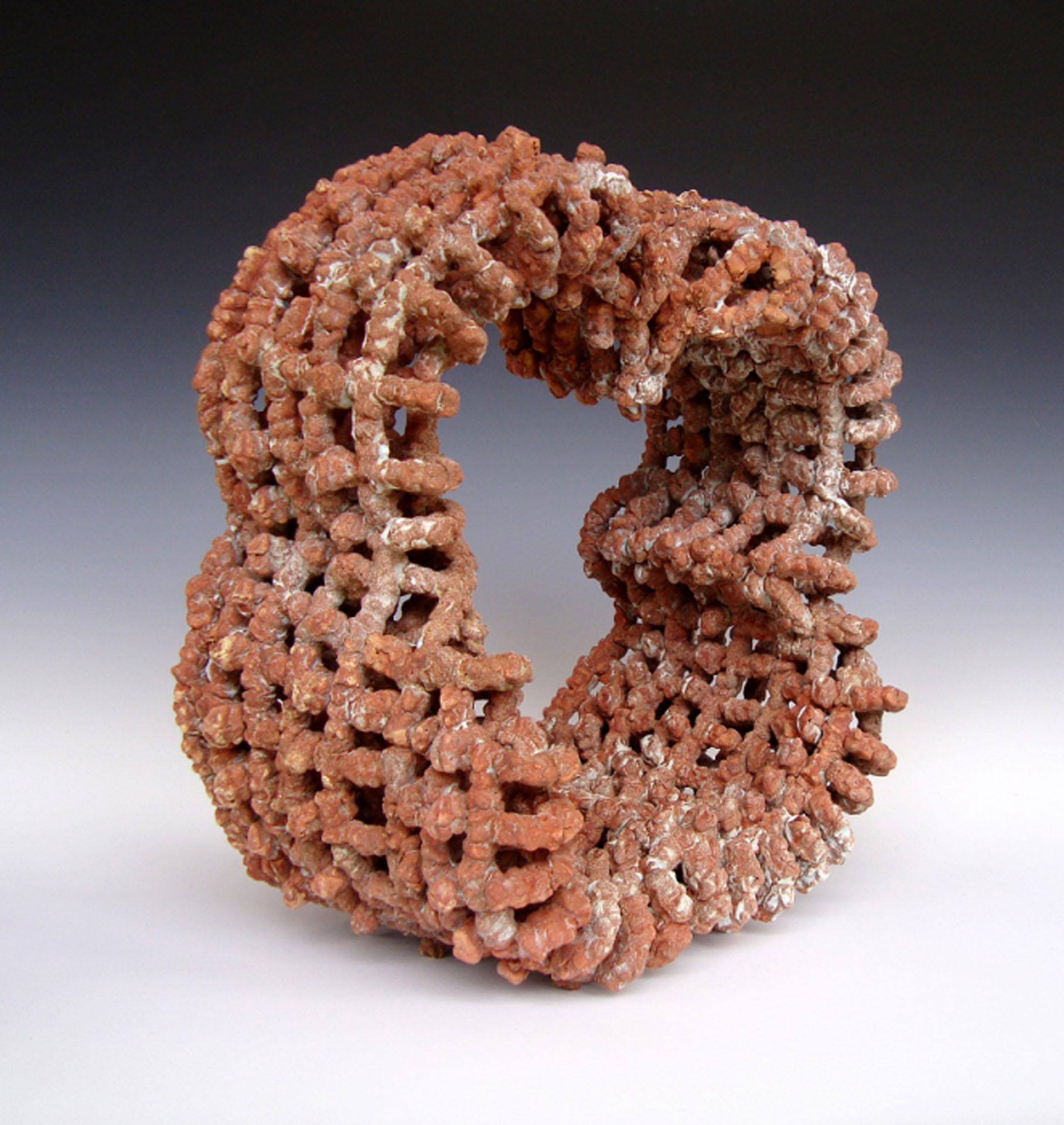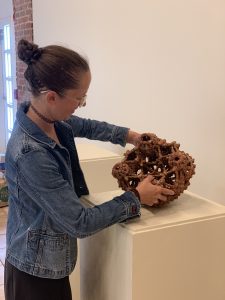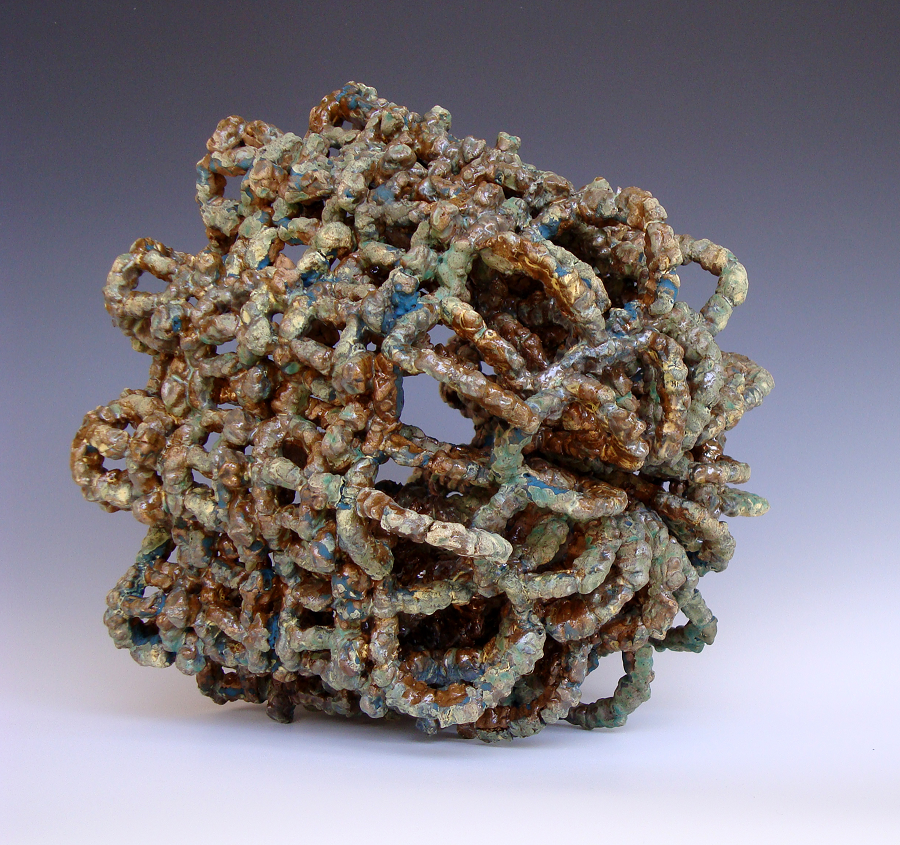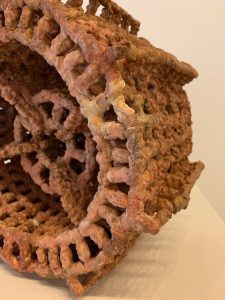
Get to know ceramic artist Jessica Smith
This summer, WMA’s communications intern, Harley Masoner, set out to learn more about ceramic artist Jessica Smith, whose exhibition, In Flux, is on display in the Dove Gallery through the end of the year.
Smith will teach a Visiting Artist Workshop on Saturday, November 16. In the one-day class, students will create a functional plate and will learn the ceramic technique called “sprigging,” a molding process used by Smith to create the pieces that make up her WMA exhibition.
Read Harley’s interview with Jessica below, and sign up for the workshop here!
Who inspired you to make a career out of art? How did they do so?
 There were so many people along the way who inspired me to be an artist. My parents unintentionally helped sow the seeds. My mother was a professor and my father was an industrial designer so creativity was really encouraged in my house. I vividly remember that my mother would frequently take me to craft stores. Likewise, my father and I would spend hours creating forts from empty packaging boxes. I was that introverted kid who was really inspired by the ordinary; empty boxes, stacks of cups, and pans could occupy me for days.
There were so many people along the way who inspired me to be an artist. My parents unintentionally helped sow the seeds. My mother was a professor and my father was an industrial designer so creativity was really encouraged in my house. I vividly remember that my mother would frequently take me to craft stores. Likewise, my father and I would spend hours creating forts from empty packaging boxes. I was that introverted kid who was really inspired by the ordinary; empty boxes, stacks of cups, and pans could occupy me for days.
The public schools that I attended really advocated the fine arts. I think that made me realize I could make a satisfying career for myself in the field. Even my grade school principal was also an exhibiting artist. In particular, my high school ceramics teacher provided a nurturing environment where I happily spent hours throwing on the pottery wheel.
Did you always know your place in art was in ceramics? If not, what drew you to ceramics?
Ceramics was a material that hooked me in pretty early on. I tried working with a variety of other mediums and never found a material that felt more immediate than clay. Sometimes I joke that I’m the kid who never stopped playing in the mud.
As an artist and a teacher, how important do you feel the arts are to our culture?
The arts help define us both individually and unify us as a collective culture. Without the arts, we’d just be going through the rigamarole of eating, breathing, sleeping, and working…and there’s no fun in just that.

“Stinger,” 2017, Stoneware ceramics
You are originally from Chicago, how has being in the South for a number of years affected your creative process?
I’m absolutely obsessed with living in Alabama and find it to influence my creative process in the most bizarre ways. I really enjoy exploring the landscape on my bicycle. It took me a while before I realized that a lot of the glazes I create are inspired from the sorts of colors and surfaces that I see while biking. I was looking at a moss-covered rock this morning and wondering how to capture it as a ceramic glaze.
What kind of impact would you like this exhibition at WMA to have on the viewer?
I always get excited by how a viewer processes visual content. The average person looks at a piece of art for just a few seconds. Our attention spans are short. You end up seeing a lot more when you look at a piece of art for a longer amount of time. Art can grow with you. In my case, there are a number of gateways to enter my work. There is rebar and other architectural references. There are nods toward wicker baskets and fish traps. There is the gummy bear factor. Then, the viewer pieces together what it all might mean. I guess that a good takeaway is to take your time when exploring something and to be receptive toward changes in perception.

Detail of “Chomper,” 2017, Stoneware ceramics
What is it about the relationship between molds and ceramics that you find so fascinating?
Molded clay is a material that is literally all over the place in varying scales. It’s the mug in your cupboard and the porcelain crown on your teeth. There is also a beauty of imperfection about the process. The more you try to mold something using wet clay, the more you can see flaws and a lack of uniformity. Ultimately, you just have to embrace all of this.
What made you choose the shape of gummy bears for this group of works?
I initially experimented a lot. I cast a variety of different objects to see how they would translate as clay sculpture. I played around with different shapes, sizes, and modules. Right now, these bears are the perfect shape for the sculptures that I want to create. There’s something about the smallness and scale that speaks to me. I also enjoy how gummy bears offer up a reference toward my favorite childhood indulgence.
How do you revive yourself when you aren’t feeling creative?
Hearing live music or practicing yoga always helps me recharge creatively.
View More Stories